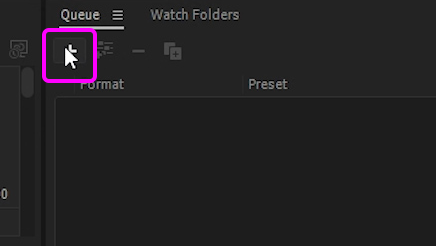A step-by-step guide to saving videos in Cinema 4D.
Actually saving a video in Cinema 4D isn’t quite that easy, but it isn’t daunting either. In this article, we are going to discuss two ways to render a video out of Cinema4D.
- The first is really straightforward, but you’re racing against the odds to have a crash and lose all your work.
- The second will save you hours of frustration in the future, but it involves an extra step.
How to render straight to video
You’ve got your scene set up. It looks fantastic. Now, you need to do some more work with it either in Adobe After Effects, Premiere Pro, or possibly even Nuke or Fusion. Maybe it isn’t any of that. Maybe you’ve got an Instagram following that you’ve been doing daily renders for, but never actually rendered out a video. Cinema4D has you covered.
STEP 1: GO INTO YOUR RENDER SETTINGS.
There are three ways to get to your render settings.
- Click on the “Render” menu, and scroll down to “Edit Render Settings”.
- Use the shortcut Ctrl+B (PC) or Cmd+B (Mac).
- Third, press this handy-dandy icon:

STEP 2: CHECK YOUR RENDER SETTINGS.
We probably don’t have to tell you this, but make sure you double check all your output settings. There's no magic formula here. In fact, you can spend a lot of time trying to learn what each individual setting means. So go ahead and double check that your settings are good to go. Seriously. Stop reading this and go make sure that everything looks good. I'll wait...
STEP 3: STRAIGHT TO VIDEO.
In your render settings, hit the check mark on “Save” to tell Cinema4D you are ready to render your scene to a file. Under “Save”, you’ll get a few format options. Everything from a .png to an .mp4 video. Choosing MP4 will be the most straightforward way to render your Cinema4D scene to a video, but just know that you can export a lot of different formats in C4D.
Did Cinema 4D Crash While Saving?
If you’re lucky enough that Cinema4D didn’t crash during your spectacular 1000 frame master piece, congratulations! However, crashes happen no matter how solid Maxon develops Cinema4D. Complex scenes take a lot of power to render, and rendering straight to video is a sure way to lose your render. The best way to combat that is through rendering an image sequence and processing that sequence into a video.
AN IMAGE WHAT?
Imagine an image sequence like those doodles you would do as a kid in the corner of your notebook. Each page would have a slightly different image to create the illusion of movement. Also known as, animation.
This is the same for film, TV, and everything you watch on a screen. It is actually a series of images that are being played back at a rate in which the eye perceives movement instead of a still image.
Choosing to render an image sequence out of Cinema4D allows motion designers and 3D artist to hedge their bets on a crash happening. In the event of a crash, the user can restart an image sequence render from where it last left off and not lose everything the way one would with rendering straight to a video format. This does mean there are a couple more steps.
How to render an image sequence from Cinema4D
Similar to rendering a video, you’re going to repeat all the same steps, except you can jump to step three.
ALTERNATE STEP 3: RENDER AN IMAGE SEQUENCE FROM CINEMA4D
This time, under your “Save” options, you’ll want to choose an image format. That means a .png, .jpg, .tiff, etc. It is a good idea to choose a folder location dedicated to catching all the images that Cinema4D is about to render out. If you have a very long scene and don’t choose a dedicated folder for the sequence, you’re going to weep over the mess you’ve made on your hard drive.
ALTERNATE STEP 4: USE ADOBE MEDIA ENCODER TO TRANSCODE THE IMAGE SEQUENCE.
Most motion designers are working with Adobe’s Creative Cloud suite, and as long as you have Adobe After Effects or Premiere Pro installed, you can install Adobe Media Encoder for free. If you're not using Creative Cloud and are without access to Adobe Media Encoder, you can use an awesome free software called Handbrake.
WHAT IS TRANSCODING?
In short, transcoding is taking one video format and converting it to another video format. Sometimes this is necessary because a client cannot read ProRes or the 4K RAW file you received slows down your computer too much. For this purpose you'll need to transcode your image sequence to a video file. If you’d like to learn more about transcoding, check out this article.

ALTERNATE STEP 5: RENDER YOUR IMAGE SEQUENCE WITH ADOBE MEDIA ENCODER
We’ve covered Adobe Media Encoder in some other articles, but have no fear! It is so simple that you can do it with a couple clicks. When Adobe Media Encoder opens, you’ll see a plus sign to add your media. Go ahead and press that button and find the image sequence you just rendered.

Adobe Media Encoder will automatically assume that you want to transcode that sequence.
Right now you could hit the play button and render out a transcoded version of that file and be on your way. However, take a moment and choose whatever format you’re looking to export this as. For social media, I recommend the .mp4 format because it compresses to a nice size while also holding up its integrity quite well.
Now, go get a beer. You deserve it after learning two ways to render out a video from Cinema4D.
ENROLL NOW!
Acidbite ➔
50% off everything

ActionVFX ➔
30% off all plans and credit packs - starts 11/26

Adobe ➔
50% off all apps and plans through 11/29

aescripts ➔
25% off everything through 12/6
Affinity ➔
50% off all products

Battleaxe ➔
30% off from 11/29-12/7
Boom Library ➔
30% off Boom One, their 48,000+ file audio library
BorisFX ➔
25% off everything, 11/25-12/1

Cavalry ➔
33% off pro subscriptions (11/29 - 12/4)

FXFactory ➔
25% off with code BLACKFRIDAY until 12/3

Goodboyninja ➔
20% off everything

Happy Editing ➔
50% off with code BLACKFRIDAY

Huion ➔
Up to 50% off affordable, high-quality pen display tablets

Insydium ➔
50% off through 12/4
JangaFX ➔
30% off an indie annual license
Kitbash 3D ➔
$200 off Cargo Pro, their entire library
Knights of the Editing Table ➔
Up to 20% off Premiere Pro Extensions
Maxon ➔
25% off Maxon One, ZBrush, & Redshift - Annual Subscriptions (11/29 - 12/8)
Mode Designs ➔
Deals on premium keyboards and accessories
Motion Array ➔
10% off the Everything plan
Motion Hatch ➔
Perfect Your Pricing Toolkit - 50% off (11/29 - 12/2)

MotionVFX ➔
30% off Design/CineStudio, and PPro Resolve packs with code: BW30

Rocket Lasso ➔
50% off all plug-ins (11/29 - 12/2)

Rokoko ➔
45% off the indie creator bundle with code: RKK_SchoolOfMotion (revenue must be under $100K a year)

Shapefest ➔
80% off a Shapefest Pro annual subscription for life (11/29 - 12/2)

The Pixel Lab ➔
30% off everything
Toolfarm ➔
Various plugins and tools on sale

True Grit Texture ➔
50-70% off (starts Wednesday, runs for about a week)

Vincent Schwenk ➔
50% discount with code RENDERSALE

Wacom ➔
Up to $120 off new tablets + deals on refurbished items



